Keeping your in-ground pool sparkling clean can feel like a never-ending battle. Skimming leaves, scrubbing surfaces, and manually vacuuming the bottom take precious time away from enjoying your backyard oasis. Suction pool cleaners offer a powerful and convenient solution, utilizing your existing pool filtration system for effortless cleaning.
Basics of Suction Pool Cleaners
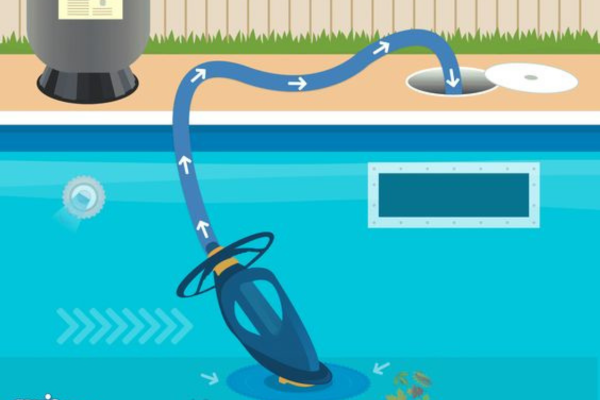
Suction pool cleaners are a popular choice for automated pool maintenance, known for their simplicity and efficiency. Understanding how these devices function can help pool owners make informed decisions about their pool care.
What Are Suction Pool Cleaners?
Suction pool cleaners are devices that attach to the suction side of a pool’s filtration system. They are designed to remove debris and dirt from swimming pools by using the existing suction from the filtration pump to move around the pool and vacuum the floor and walls. This type of cleaner is typically less expensive than other automatic cleaners and is easy to install and operate.
How Do Suction Pool Cleaners Work?
The operation of a suction pool cleaner involves several key components and steps:
Connection: The cleaner is connected to the pool’s skimmer box or a dedicated suction port.
Suction Force: Once the pool pump is turned on, water is drawn into the cleaner, creating suction that propels the cleaner across the pool’s surfaces.
Movement and Cleaning: The cleaner moves in a random or predetermined pattern, depending on the model. As it moves, it sucks up dirt and debris from the pool’s floor and walls, which are then transported through the hose to the pool’s filter.
Debris Collection: The filter basket of the pool is where the cleaner trapped the debris it collected. Regular emptying of the filter basket is essential to maintaining the cleaner’s efficiency.
Understanding the Basics of Suction Pool Cleaners
To effectively utilize a suction pool cleaner, it’s important to grasp some technical aspects and operational fundamentals:
Hose Length: Ensuring the hose is long enough to allow the cleaner to reach all areas of the pool without stretching is crucial for effective cleaning.
Pump Strength: The efficiency of a suction cleaner is directly related to the strength of the pool’s pump. The pump must provide adequate suction for the cleaner to function properly.
Adjustments: Many models come with flow control valves or regulators to adjust the speed and suction power of the cleaner, optimizing its cleaning pattern and thoroughness.
Maintenance: Regular maintenance, such as checking for blockages in the hose and ensuring the filter is not overly full, will keep the cleaner running smoothly.
Advantages of Suction Pool Cleaners
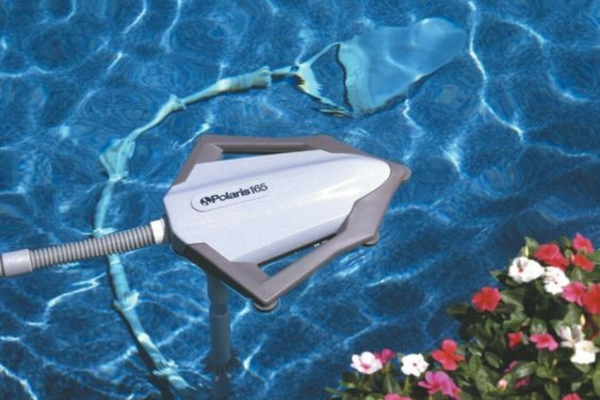
Suction pool cleaners offer a range of benefits that make them a popular choice for maintaining clean and healthy swimming pools. Their design and operation provide several advantages, from cost savings to ease of use.
Benefits of Using a Suction Pool Cleaner
Suction pool cleaners are celebrated for their:
Cost-Effectiveness: Generally, suction pool cleaners are less expensive than their robotic and pressure-side counterparts. They do not require a separate booster pump or additional plumbing, which minimizes upfront installation costs.
Ease of Maintenance: These cleaners have fewer moving parts and simpler mechanisms, which makes them easier to repair and maintain. Routine maintenance typically involves just checking and cleaning the filter and hose.
Efficient Cleaning Performance: Suction pool cleaners are effective at removing debris and dirt from the pool’s floor and walls, helping to maintain a clean environment consistently. They work directly with the pool’s existing filtration system, enhancing the system’s overall efficiency by removing debris before it settles.
Top 7 Benefits of Suction Pool Cleaners
Here are seven key advantages of using suction pool cleaners:
Simplicity of Installation: Suction cleaners can be quickly and easily set up by connecting them to the pool’s filtration system, without the need for any specialized tools or professional help.
Energy Efficiency: They utilize the existing pool pump, hence do not require additional energy sources. This can lead to lower energy consumption compared to cleaners that need separate pumps.
Low Operating Costs: With minimal mechanical parts and no need for extra power, the operating costs are generally lower than other types of pool cleaners.
Reliability: Due to their simple design and operation, suction pool cleaners tend to be very reliable, with less likelihood of malfunction.
Thorough Cleaning: They are particularly effective at picking up fine particles from the pool, helping to keep the water crystal clear.
Ease of Use: Once set up, suction cleaners operate automatically whenever the pool pump is running, reducing the manual effort required to keep the pool clean.
Compatibility: Suction pool cleaners work well in various pool sizes and shapes, provided the correct hose length and proper adjustments are made to accommodate the specific pool.
Installation and Operation of Suction Pool Cleaners
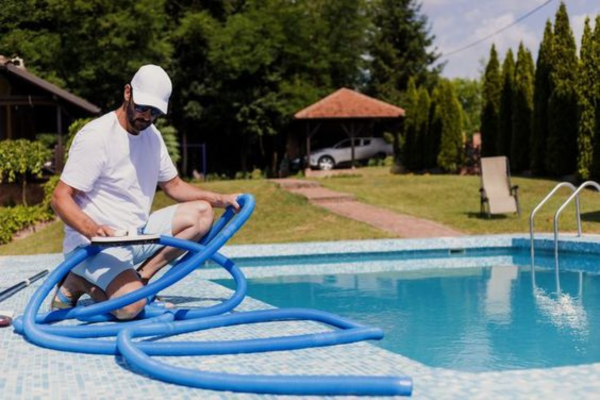
Suction pool cleaners are known for their ease of installation and straightforward operation, making them a popular choice among pool owners.
Are Suction Pool Cleaners Easy to Install and Operate?
Suction pool cleaners are generally straightforward to install and operate, making them ideal for those who prefer a low-maintenance pool cleaning solution. Their design integrates seamlessly with the pool’s existing filtration system, requiring no additional pumps or complex setups.
Step-by-Step Guide for Installing a Suction Pool Cleaner
Follow these detailed instructions to properly install your suction pool cleaner:
Assemble the cleaner.
Unpack all parts and assemble the cleaner according to the manufacturer’s instructions. This usually involves connecting the hose sections and adjusting the cleaner for the specific pool depth.
Attach the Hose
Connect the hose to the cleaner. Ensure all connections are tight to prevent air leaks, which can reduce suction power.
Connect to the Skimmer or Suction Port
If your pool has a skimmer, use the skimmer adapter provided with the cleaner. For pools with a dedicated suction port, connect the hose directly to the port.
Remove Air from the Hose
Submerge the hose completely to fill it with water and eliminate air pockets. This is crucial, as air in the system can impair the cleaner’s ability to function effectively.
Start the Pool Pump
Turn on the pool’s filtration pump. This will begin the suction process that powers the cleaner. Observe the cleaner for a few minutes to ensure it is moving properly and adjusting to the contours of the pool.
Adjust the Suction
Adjust the suction power if necessary. Most cleaners have a valve or regulator to control the flow rate, ensuring optimal movement and cleaning efficiency.
Tips for Efficiently Operating Your Suction Pool Cleaner
To maximize the efficiency of your suction pool cleaner, consider these best practices:
Regular Maintenance: Regularly check and clean the filter, hose, and cleaner itself to ensure optimal performance. A clogged filter can significantly reduce the cleaner’s efficiency.
Proper Suction Settings: Too much suction can cause the cleaner to get stuck, while too little can impair its cleaning ability. Adjust the suction to achieve a balance that allows the cleaner to move freely and cover all areas of the pool.
Monitor Cleaner Path: Occasionally, observe the cleaner in action to ensure it is covering the entire pool. Adjust the hose length or the suction settings if there are areas that the cleaner consistently misses.
Avoid overloading: Do not expect the suction cleaner to pick up large debris or clear a heavily soiled pool all at once. Use a manual net to remove large debris before setting the cleaner to work on finer particles.
Compatibility and Selection of Suction Pool Cleaners

Selecting the right suction pool cleaner requires understanding the compatibility of these devices with different pool types and surfaces, as well as considering specific pool characteristics.
What Types of Pools Are Suitable for Suction Pool Cleaners?
Suction pool cleaners are versatile and can be effective in a variety of pool types and sizes, but there are some optimal conditions for their use:
Pool Size: Suction cleaners are typically suitable for small to medium-sized pools. Large pools may require a cleaner with more powerful suction or multiple cleaners to efficiently cover the entire area.
Pool Type: These cleaners work well in both in-ground and above-ground pools. However, the effectiveness can vary depending on the complexity of the pool’s shape and the presence of additional features like stairs or uneven surfaces.
Compatibility with Different Pool Surfaces
Suction pool cleaners are designed to operate on a variety of pool surfaces, but some considerations must be kept in mind.
Concrete Pools: Suction cleaners perform well on rough surfaces such as concrete. They can effectively scrub and remove debris without becoming stuck.
Vinyl Liners: Care must be taken to ensure that the cleaner and its hoses are smooth-edged to avoid damaging the liner. Certain models are specifically designed to be gentle on these surfaces.
Fiberglass and Tiled Surfaces: On smoother surfaces like fiberglass and tile, suction cleaners require adequate suction power to maintain contact with the surface and prevent slipping or missing debris.
How to Choose the Best Suction Pool Cleaner for Your Pool?
When choosing a suction pool cleaner, consider the following factors to ensure you select a model that meets your specific needs:
Pool Size and Shape: Measure the pool to ensure that the cleaner’s hose can comfortably reach all areas without overextending. Consider the shape of the pool—complex shapes with lots of curves and corners may require a cleaner with advanced navigation capabilities.
Debris Type: Consider the common types of debris your pool collects. If your pool tends to gather larger debris like leaves or acorns, look for a cleaner with a larger intake and stronger suction.
Suction Power: The cleaner’s suction power should match the pool’s pump capacity. Too much suction can lead to the cleaner getting stuck, while too little won’t effectively pick up debris.
Additional Features: Features such as adjustable suction control, hoses that resist tangling, and durability in UV exposure can be beneficial depending on your pool’s environment and usage.
Maintenance and Troubleshooting for Suction Pool Cleaners
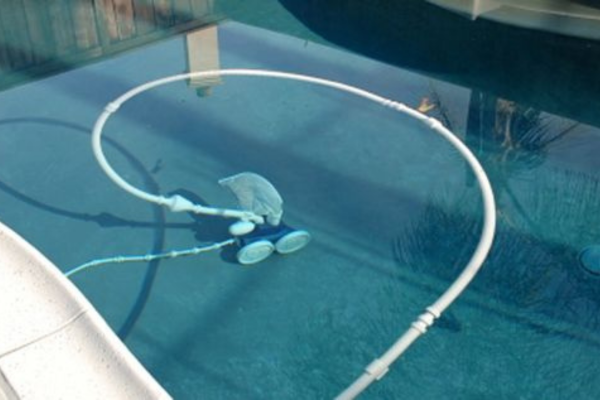
Proper maintenance and effective troubleshooting are essential for maximizing the lifespan and performance of suction pool cleaners. Understanding these practices helps ensure reliable operation and prevents common issues that could impede cleaning efficiency.
Essential Maintenance Practices for Suction Pool Cleaners
Routine maintenance is crucial for keeping suction pool cleaners operating efficiently. Here are the key tasks:
Regular Cleaning of Filters: The pool’s filter should be cleaned regularly to prevent clogging, which can affect the suction power of the cleaner. Check and clean the filter after each use or according to the manufacturer’s recommendations.
Inspection and Cleaning of Hoses: Hoses should be inspected for signs of wear or damage, such as cracks or splits, which can cause air leaks and reduce suction. They should also be flushed out regularly to remove any debris that could cause blockages.
Checking the cleaner’s footpad or skirt: Ensure that the footpad or skirt of the cleaner, which ensures proper suction on the pool surface, is not worn or damaged. Replace if necessary to maintain optimal performance.
Adjustment of Flow Control Valves: If your cleaner includes flow control valves, periodically check these to ensure they are set correctly according to your pool’s pump strength and the specific needs of your pool.
Troubleshooting Common Issues with Suction Pool Cleaners
Even with regular maintenance, suction pool cleaners can experience common issues. Here’s how to address them:
Hose Tangling: If the hose tangles frequently, lay it straight in the sun to relax the material, then coil it loosely when storing. Ensure that the hose length is appropriate for your pool size, as excess hose can contribute to tangling.
Loss of Suction: Check for leaks in the hose or connections and ensure that the pool filter is not clogged. Verify that the cleaner’s settings are adjusted correctly for the pool’s pump and filter system. Additionally, check the cleaner’s intake throat to make sure there isn’t any large debris blocking it.
Jammed Parts: Remove and inspect the cleaner for any debris that may be blocking the wheels or gears. Clean out any material found and check that all moving parts are free of obstructions and move freely.
Enhancements and Accessories for Suction Pool Cleaners
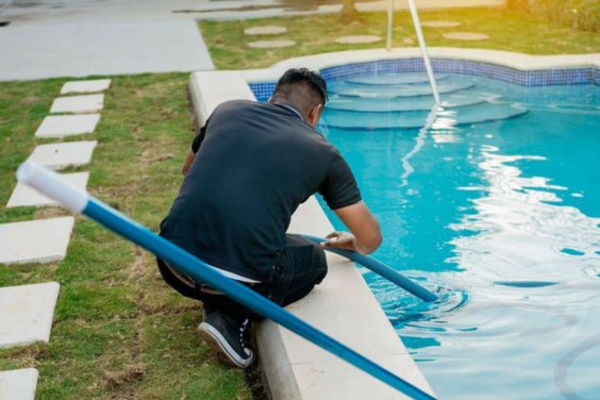
Suction pool cleaners can be optimized with various accessories and upgrades designed to enhance their performance and functionality. Understanding the available options can help pool owners customize their cleaners for improved efficiency and ease of use.
Upgrades and Accessories Available for Suction Pool Cleaners
Many manufacturers offer a range of accessories and upgrades for suction pool cleaners, each aimed at enhancing certain aspects of the cleaner’s performance.
Leaf canisters: These are attached to the hose to intercept leaves and large debris before they reach the pump basket, preventing clogging and facilitating easier cleanup.
Climbing Rings: For cleaners that struggle with climbing the pool walls, climbing rings can be added to improve traction and climbing ability.
Flow Regulators: These help manage the flow of water through the cleaner, ensuring optimal movement and cleaning efficiency regardless of variations in pump strength.
Hose Stabilizers: These are designed to prevent hose tangling and ensure smooth operation by maintaining hose alignment during cleaning cycles.
Skimmer Adapters: These are used to enhance the connection between the hose and the pool’s skimmer, ensuring a secure and efficient suction source.
Accessory Options for Customizing Your Suction Pool Cleaner
Several accessories are specifically designed to improve the functionality and ease of use of suction pool cleaners:
Universal Wall Fittings: These fittings ensure that the cleaner can be connected to any type of pool wall port, increasing compatibility and ease of installation.
Automatic Weir Valves: These valves automatically regulate water flow to maintain consistent performance even when the pool’s pump is on a low setting.
Scrubbing Brushes: Additional or replacement scrubbing brushes can be attached to the base of the cleaner to enhance its ability to remove tough dirt and algae from pool surfaces.
Hose Length Adjusters: These allow for precise adjustment of hose length to suit the specific dimensions of your pool, optimizing the cleaner’s coverage and preventing hose slack that can lead to tangling.
Protective Covers: To prolong the life of the hose and the cleaner when not in use, especially in harsh weather conditions, protective covers can be used to shield the equipment from UV damage and debris.
Comparisons and Consumer Insights on Pool Cleaners
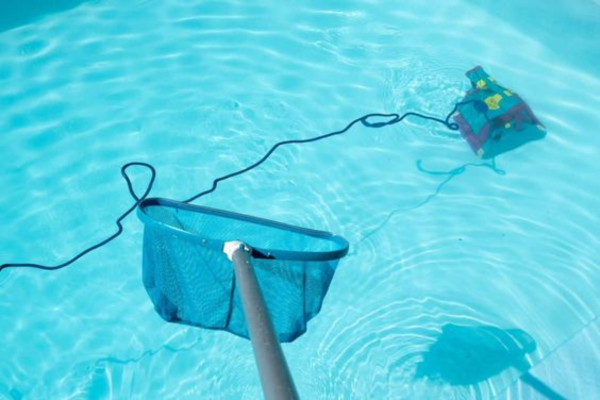
Selecting the right pool cleaner involves understanding how different types operate and comparing various models and brands. This comparison can help you identify the best option based on your specific pool needs and preferences.
Comparing Suction Pool Cleaners to Other Types
Suction pool cleaners, robotic pool cleaners, and pressure-side pool cleaners each have distinct features and operational mechanisms:
Suction Pool Cleaners: These cleaners attach to the pool’s current filtration system, move around, and clean the pool using the suction that the pool pump creates. They are generally less expensive and easier to maintain than other types. The power of the pool pump, however, may be a limiting factor in their ability to clean effectively, and they frequently rely on the pool’s filter rather than having their own debris bags.
Robotic Pool Cleaners: These are autonomous units that operate independently of the pool’s filtration system. Equipped with their own filter and motor, robotic cleaners are effective at cleaning and circulating water throughout the pool. They tend to be more expensive but offer advanced features like programmable cycles, remote controls, and superior cleaning capabilities. In my experience, robotic cleaners provide thorough cleaning with minimal manual intervention.
Pressure-Side Pool Cleaners: These cleaners use water pressure from a dedicated booster pump or the main circulation pump to move around the pool and push debris into a bag. They are effective at picking up large debris and distributing clean, filtered water around the pool. Although they require an additional pump in some setups, they help extend the life of the pool’s main filter by handling larger debris.
Comparing Different Models and Brands
When comparing different models and brands of pool cleaners, consider the following factors:
Cleaning Efficiency: Evaluate how well different models handle various types of debris and their effectiveness in cleaning all pool surfaces and corners. Brands like Hayward and Zodiac offer models renowned for their efficiency and reliability in comprehensive cleaning.
Features and Technology: Look at the additional features offered by different brands, such as advanced navigation systems, energy efficiency, and ease of maintenance. For instance, some robotic models from brands like Dolphin feature smart technology that learns the shape of the pool for optimized cleaning patterns.
Durability and Warranty: Assess the build quality and warranty provided with each model. Durable materials and a robust warranty offer peace of mind and indicate the manufacturer’s confidence in the product.
User Reviews and Professional Recommendations: Reading user reviews and seeking professional opinions can provide insights into the real-world performance and reliability of different models. In my experience, combining user feedback with professional reviews can help in making an informed decision that matches both practical needs and budget considerations.
Choosing between suction, robotic, and pressure-side pool cleaners involves weighing the cost, efficiency, and specific features of each type. Additionally, comparing different models and brands by evaluating their performance, features, and consumer feedback ensures that you select a cleaner

Meet David Thomas, a seasoned professional with nearly 8 years of experience specializing in inspecting and resolving issues related to swimming pools. With his expertise and meticulous attention to detail, David ensures the safety and functionality of pools, making them a refreshing oasis for all to enjoy. Whether it’s troubleshooting equipment or maintaining water quality, David’s proficiency guarantees top-notch solutions tailored to meet every pool owner’s needs.
